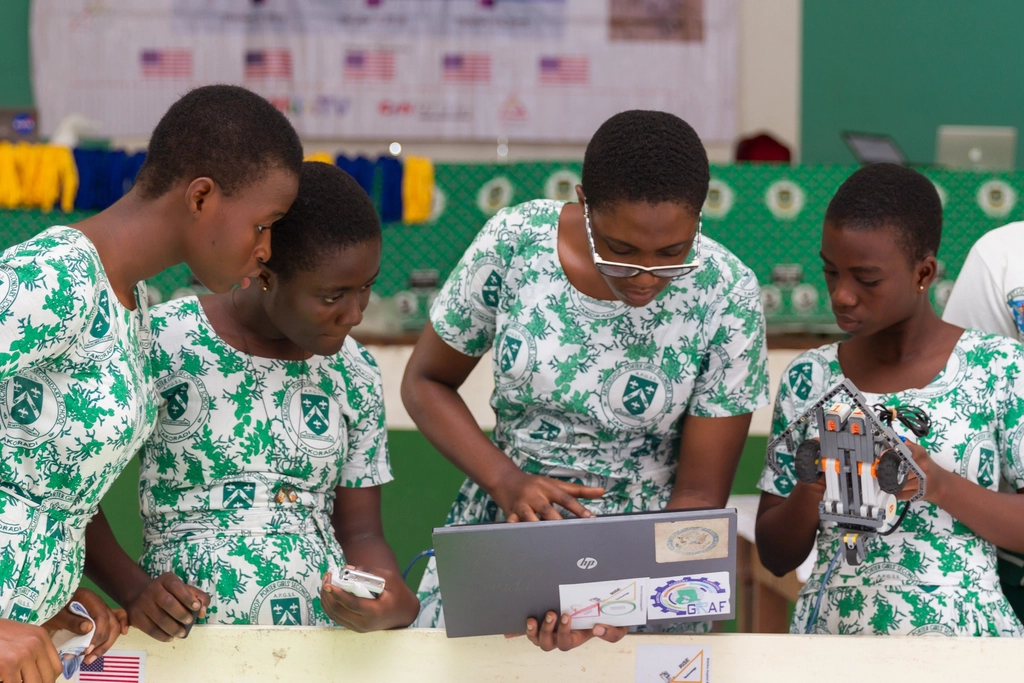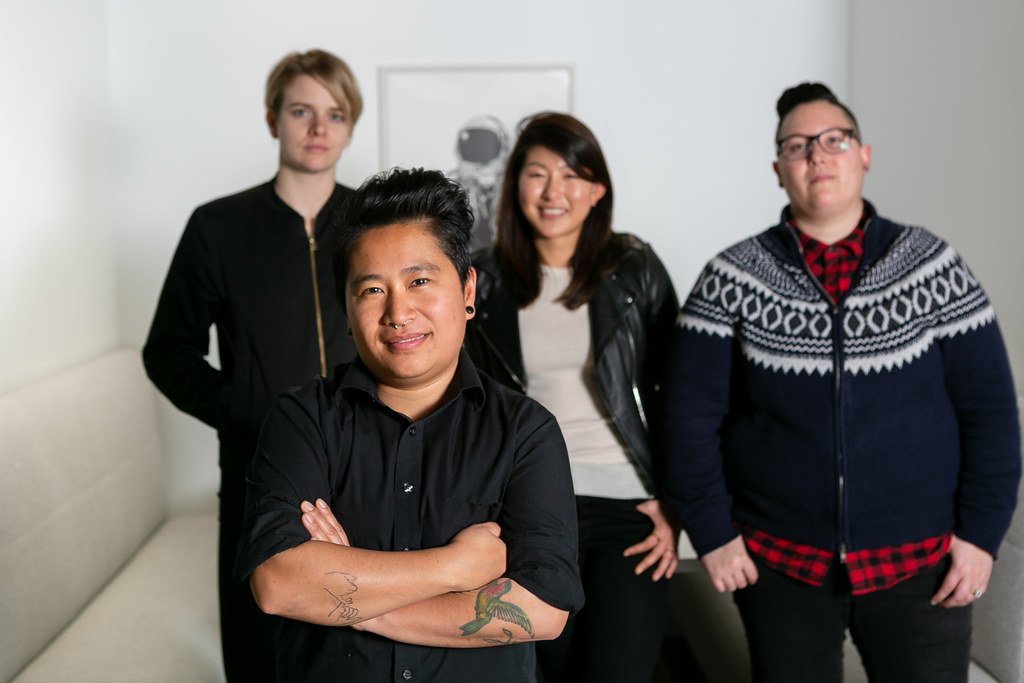Science has always been portrayed as this exclusive club where only the brightest minds belong. But what if I told you that some of the most groundbreaking discoveries might come from students who’ve been traditionally locked out of laboratories and research facilities? Across the country, innovative programs are breaking down barriers and proving that diversity in science isn’t just nice to have – it’s absolutely essential for solving our world’s biggest challenges.
The Surprising Reality Behind Science Exclusion

Walk into any major university’s chemistry lab, and you’ll notice something striking – the lack of faces that reflect America’s true diversity. Studies show that while underrepresented minorities make up about 30% of the U.S. population, they earn less than 20% of science and engineering degrees. This isn’t because of lack of interest or ability. It’s because systemic barriers have been quietly shutting doors for decades. Financial constraints, limited access to quality education, and the absence of role models create a perfect storm that keeps brilliant minds away from scientific careers. Think of it like a garden where only certain seeds get water and sunlight – the potential is there, but the conditions aren’t right for growth.
Breaking the Mold with the Meyerhoff Scholars Program

At the University of Maryland, Baltimore County, something revolutionary is happening. The Meyerhoff Scholars Program has been turning the traditional science education model upside down since 1989. This program doesn’t just recruit underrepresented students – it wraps them in a comprehensive support system that includes financial aid, mentoring, and a tight-knit community. The results speak for themselves: over 1,400 graduates have earned degrees in science and engineering, with many going on to earn PhDs and become leaders in their fields. What makes this program special isn’t just the money or the classes – it’s the understanding that success in science requires more than just individual brilliance. Students study together, support each other through tough courses, and build networks that last throughout their careers.
The Louis Stokes Alliance Changing Everything

Imagine a network so powerful that it spans entire states and connects hundreds of institutions. That’s exactly what the Louis Stokes Alliances for Minority Participation (LSAMP) has created. This National Science Foundation initiative brings together colleges and universities to dramatically increase the number of underrepresented students earning degrees in science, technology, engineering, and mathematics. Since its inception, LSAMP has helped over 650,000 students pursue STEM careers. The program operates on a simple but powerful principle: when institutions work together instead of competing, everyone wins. Students get access to research opportunities, internships, and mentoring that might not exist at their home institution. It’s like having a passport that opens doors across the entire academic landscape.
Research Experience Programs Opening New Worlds

Nothing beats getting your hands dirty in actual research, and that’s where Research Experience for Undergraduates (REU) programs shine. These intensive summer programs place students directly into active research projects, often at institutions they’d never dreamed of accessing. Picture a first-generation college student from a small town suddenly finding themselves in a cutting-edge laboratory at MIT or Stanford, working alongside graduate students and professors on projects that could change the world. The National Science Foundation funds hundreds of these programs across the country, specifically targeting underrepresented students. The experience isn’t just about learning techniques – it’s about seeing yourself as a scientist for the first time. Many students report that their REU experience was the moment they realized they belonged in science.
Why Summer Bridge Programs Are Game Changers

The transition from high school to college science can feel like jumping from a kiddie pool into the deep end of the ocean. Summer bridge programs provide the life jacket that many underrepresented students need to survive and thrive. These intensive programs, typically lasting 6-8 weeks, give incoming students a head start on college-level coursework while building essential study skills and confidence. At universities like UCLA and UC Berkeley, bridge programs have become legendary for their ability to transform academic trajectories. Students who might have struggled in their first chemistry or calculus course instead arrive prepared and confident. The magic happens when students realize they’re not alone – they’re surrounded by peers who share similar backgrounds and challenges.
Mentorship That Goes Beyond Academics

Ask any successful scientist about their journey, and they’ll likely mention a mentor who changed everything. For underrepresented students, mentorship becomes even more critical because they often lack family members or community connections who understand the academic world. Effective mentorship programs pair students with faculty, graduate students, or professionals who look like them and share similar experiences. These relationships extend far beyond homework help – mentors provide career guidance, emotional support, and real-world insights about navigating academia. The best programs train mentors specifically to understand the unique challenges faced by underrepresented students, from imposter syndrome to family expectations about career choices.
Financial Support That Actually Works

Let’s be honest – pursuing science can be expensive, and traditional financial aid often falls short. The most effective programs understand that meaningful financial support means more than just tuition assistance. Students need funding for research conferences, lab materials, and even basic living expenses during unpaid internships. Programs like the Gates Millennium Scholars and the National Science Foundation’s Graduate Research Fellowship specifically target underrepresented students with comprehensive financial packages. When students don’t have to choose between paying rent and buying textbooks, they can focus on what really matters – learning and discovering. Think of it as removing the financial stress that often derails promising scientific careers before they even begin.
Community Building in Scientific Spaces

Science can be lonely, especially when you’re one of the few people who look like you in a classroom or lab. The most successful programs understand that community isn’t just nice to have – it’s essential for retention and success. They create spaces where underrepresented students can connect, share experiences, and support each other through challenges. These communities often extend beyond formal program boundaries, with alumni networks that provide ongoing support and opportunities. Students learn that their diverse perspectives aren’t deficits to overcome but strengths that enhance scientific inquiry. When you’re surrounded by people who understand your journey, you’re more likely to persist through the inevitable obstacles that come with scientific training.
Hands-On Learning That Sparks Passion

Traditional science education often emphasizes memorization over discovery, but the most effective programs flip this approach entirely. They provide extensive hands-on research opportunities that allow students to experience the thrill of scientific discovery firsthand. Whether it’s designing experiments, analyzing data, or presenting findings at national conferences, these experiences transform students from passive learners into active scientists. Many programs partner with national laboratories, tech companies, and research institutions to provide internships that expose students to cutting-edge science. The goal isn’t just to teach scientific facts but to ignite the passion that drives lifelong scientific careers.
Family and Community Engagement Strategies

For many underrepresented students, pursuing science means venturing into uncharted territory that their families might not understand or support. Successful programs recognize that engaging families and communities is crucial for student success. They host family orientation sessions, community events, and cultural celebrations that help families understand the value and opportunities in scientific careers. Some programs even provide resources in multiple languages and create spaces for families to ask questions and voice concerns. When families become allies rather than obstacles, students feel supported in their academic journey. It’s like building a bridge between two worlds – the student’s home community and their scientific aspirations.
Professional Development Beyond the Classroom

Knowing science is one thing, but knowing how to navigate scientific careers is entirely different. The best programs provide comprehensive professional development that covers everything from networking skills to grant writing. Students learn how to present their research, write compelling personal statements, and interview for graduate programs or industry positions. Many programs bring in successful scientists from diverse backgrounds to share their career journeys and provide practical advice. These skills become especially important for first-generation college students who might not have family members who understand professional environments. It’s like getting a roadmap for a journey you’ve never taken before.
Technology and Innovation in Access Programs

Modern accessibility programs are leveraging technology to reach students who might never have access to traditional opportunities. Virtual reality lab experiences allow students to conduct experiments they could never afford in person. Online mentoring platforms connect students with scientists around the world. Mobile apps provide study resources and career guidance tailored to underrepresented students’ specific needs. Some programs use artificial intelligence to identify students who might benefit from additional support before they struggle academically. Technology isn’t replacing human connection but enhancing it, creating new pathways for students to engage with science regardless of their geographic location or economic circumstances.
Success Stories That Inspire Change

Behind every statistic about increased diversity in science, there’s a human story of transformation and achievement. Consider Maria, a first-generation Mexican-American student who discovered her passion for environmental science through a summer bridge program and now leads climate research at a major university. Or think about Jamal, whose participation in a mentorship program led him from a struggling pre-med student to a successful physician-scientist developing new cancer treatments. These stories aren’t just inspiring – they’re proof that when barriers are removed, extraordinary things happen. Each success creates a ripple effect, inspiring younger students and demonstrating that scientific careers are achievable for everyone.
Measuring Impact Beyond Numbers

While graduation rates and career outcomes are important metrics, the true impact of these programs goes much deeper. They’re changing the culture of science itself, bringing diverse perspectives that lead to better research questions and more innovative solutions. Studies show that diverse research teams are more creative and produce higher-quality science. When programs successfully support underrepresented students, they’re not just helping individuals – they’re strengthening the entire scientific enterprise. The questions that diverse scientists ask often differ from traditional approaches, leading to discoveries that might never have emerged from homogeneous research teams.
Challenges and Obstacles That Remain

Despite remarkable progress, significant challenges persist in making science truly accessible. Funding for diversity programs often fluctuates with political climates and economic conditions. Some institutions struggle to create inclusive environments even after recruiting diverse students. The transition from undergraduate programs to graduate school remains particularly challenging, with many students facing isolation and discrimination in advanced degree programs. Additionally, the pressure to prove themselves worthy of their opportunities can create additional stress for program participants. Addressing these ongoing challenges requires sustained commitment from institutions, funding agencies, and the broader scientific community.
The Future of Scientific Accessibility

The landscape of scientific accessibility continues evolving as programs learn from successes and failures. Emerging trends include greater emphasis on mental health support, recognition of intersectional identities, and partnerships with community organizations. Some programs are experimenting with alternative pathways into science that don’t follow traditional academic routes. Others are focusing on retention in graduate school and early career stages, recognizing that getting students into science is only half the battle. The goal is creating a pipeline that’s not just more diverse at the entry point but maintains that diversity throughout scientific careers. As these programs mature, they’re sharing best practices and creating networks that amplify their individual impacts.
These transformative programs represent more than just educational initiatives – they’re reshaping the very foundation of scientific discovery. When we open doors that have been closed for too long, we don’t just help individual students achieve their dreams. We enrich the entire scientific community with perspectives, questions, and solutions that emerge from diverse experiences and backgrounds. The students entering laboratories today through these programs will be the ones solving tomorrow’s greatest challenges, from climate change to disease prevention. Their success proves that talent exists everywhere, but opportunity doesn’t always follow. What discoveries are we missing when brilliant minds remain locked out of scientific careers?




